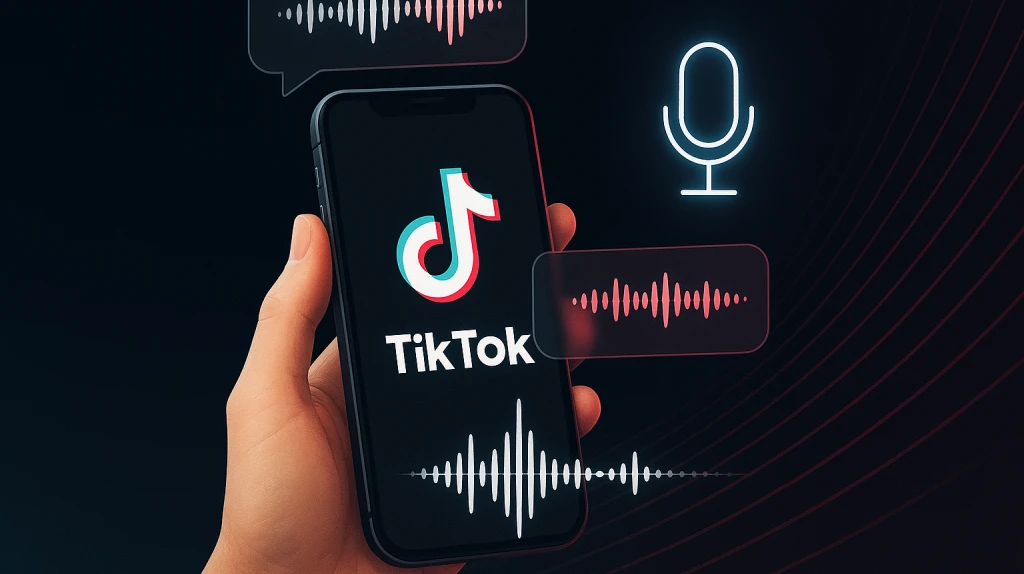How to Make an AI Voice: A Step-by-Step Guide for Beginners
Anna
·July 7th 2025
Ever wondered how to make an AI voice for a funny video or a professional voiceover? This step-by-step guide for beginners shows you exactly how. We’ll cover everything from how the technology works to recording your first sample. By the end, you'll see how simple it is to create a custom, natural-sounding AI voice for any project or just for fun.
This guide walks you through the simple, step-by-step process of making your own AI voice. It covers everything from choosing the right tool to using your final creation. No technical skills are needed to get started and create personalized, natural-sounding audio.
Understanding AI Voice Technology
AI voice technology uses artificial intelligence to create and mimic human speech. It involves training computer models to produce natural-sounding voices that can read text aloud or respond in conversations. This technology powers tools like virtual assistants, voiceovers, and AI voice generators with multiple voice options.
What Is an AI Voice?
An AI voice is a synthetic voice produced by a computer using Text to Speech (TTS) technology. These voices are created by analyzing large amounts of recorded human speech and learning its patterns. The result is a voice that can speak written text aloud.
Advanced AI voice technology uses deep learning to capture the nuances of a human voice, like intonation and emotion. This allows for the creation of a truly realistic AI voice that is hard to distinguish from a real person. Custom AI voices can also be made with voice cloning, which copies a specific person's speech patterns.
How Voice Generation Works
Voice generation starts with collecting voice data, usually many hours of human speech recordings. Machine learning models analyze this data to understand how sounds combine to form words and sentences.
Next, speech synthesis is used. The AI converts text input into audio by predicting which speech sounds to produce, adjusting pitch, speed, and emphasis to sound natural.
Some AI voice systems use voice conversion techniques. These modify existing voices into new ones by altering speech characteristics while keeping them understandable. This widens the choice of voices for applications like AI voice assistants and voiceovers.
Types of AI Voice Systems
There are three main types of AI voice systems: concatenative, parametric, and neural network-based.
- Concatenative TTS stitches small pieces of recorded speech together. It sounds natural but is less flexible.
- Parametric TTS generates speech from parameters controlling sound features. It can sound more robotic but allows easy customization.
- Neural TTS uses deep learning to generate speech waveforms. It produces the most natural and diverse voices.
Neural TTS powers most modern AI voice generators. It supports multiple voice options, including different accents and emotions, improving applications like virtual assistants.
How to Make an AI Voice: Step-by-Step Guide
Creating an AI voice involves choosing the right tools, preparing voice data, and adjusting settings to get the best sound. Once trained, the AI voice can be exported and used in various formats. This is useful for purposes like voiceovers or real-time speech.
Choosing the Right AI Voice Generator
Finding the best AI voice generator for your project is a key first step. While desktop tools are available, mobile apps like Voices AI offer a convenient way to create voices directly from your phone. These platforms offer features like a large library of existing voices, custom voice cloning, and other high-quality customization options.
Users should consider if they want a free AI voice generator or a paid one for more advanced options. The tool’s ability to support multiple speaking styles can improve naturalness. Also, check if it allows easy export in formats like .mp3 or .wav for wider use.
Recording and Preparing Voice Samples
High-quality voice samples are key for creating a clear AI voice. Record audio in a quiet room to reduce background noise, ensuring the sample has consistent volume and clear pronunciation. Many smartphones have quality microphones, and apps like Voices AI allow you to record and upload samples directly for cloning.
Samples usually last from a few minutes up to an hour, depending on the tool. Longer recordings help the AI learn better, especially when trying to clone a voice. After recording, clean the audio by removing noise and silences to ensure smooth voice generation.
Training and Customizing the AI Voice
Training the AI involves feeding it the processed voice samples. The AI uses this data to learn patterns like pitch, tone, and rhythm. Many tools allow fine-tuning the voice to add or adjust emotional tones and speaking styles.
Customizing the voice might include adjusting speed, pitch, or emphasis to match desired outcomes. This helps make the output sound natural and fitting for different applications like audiobooks or virtual assistants.
Exporting and Using Your AI Voice
Once the AI voice is trained and customized, it can be exported for use. Most AI voice generators offer exporting in common audio formats such as .mp3. This makes it simple to use the voice in social media videos, presentations, or other apps.
Users can then generate speech directly from text or use the voice for speech conversion in real time. Some platforms also support batch voiceover creation, saving time for projects that need multiple recordings.
What Can You Do With an AI Voice?
Once you have an AI voice, a world of creative possibilities opens up. From professional projects to lighthearted fun, there are many ways to use this technology.
Content Creation and Voiceovers
One of the most popular uses for AI voices is creating an AI voiceover for digital content. You can narrate YouTube videos, explain concepts in tutorials, or add a voice to your TikTok and Instagram Reels. This gives your content a professional touch without needing expensive recording equipment.
Entertainment and Fun
AI voices are also great for entertainment. You can create funny messages for friends by typing text and having it read by a voice from a huge library of characters and celebrities. Apps like Voices AI are designed for this, acting as a fun voice changer that lets you easily make humorous audio clips for pranks or social media posts.
Start Creating Your AI Voice Today
As this guide has shown, making your own AI voice is no longer a complex task. From understanding the basics of voice generation to exporting your final audio, the process is straightforward and accessible. You now have the steps to create unique voices for everything from professional content to fun social media posts.
Ready to put this guide into action? The Voices AI app makes it easy to get started directly from your phone. It offers a massive library of voices and all the tools you need for voice cloning and Text to Speech in a user-friendly package. Download Voices AI to begin creating your own custom AI voices in minutes!
Frequently Asked Questions
Many AI voice tools offer free options, natural-sounding voices, and custom voice cloning features. Users can choose from different text-to-speech methods and find reliable places to download these tools. Some also provide ways to make a voice sound more robotic or artificial.
What are the top free AI voice generators?
Popular free AI voice generators include tools like Free AI Voice Generator and Voice Designer. Mobile apps like Voices AI also offer free versions to get started.
These allow users to create voices without signing up and offer various voice options. They often support downloading audio files directly.
Which AI voice generator offers the best natural-sounding results?
Generators that use advanced neural networks tend to produce the most realistic voice results. Tools designed for realistic speech focus on tone, pacing, and clarity to mimic human speech closely.
How can I clone a voice using AI technology?
Voice cloning involves recording a person's voice and feeding it into AI software to create a custom voice model. Apps like Voices AI allow you to do this from your phone by analyzing voice samples to replicate tone and speech patterns.
What options do I have for Text to Speech AI voice generation?
Users can select from pre-made voices or create custom ones by adjusting pitch, speed, and emotion settings. Many generators offer a simple text input that converts typed words into spoken audio.
Where can I download a reliable AI voice generator?
Reliable AI voice generators can be found on official websites or app stores like the Google Play Store. It is best to use tools with good user reviews and clear instructions for downloading and use.
How do I change my voice to sound like an AI?
Using a voice changer tool or app is the easiest way. These often have effects that make your speech sound robotic or synthetic, which some voice designer tools let users add during the voice creation process.





